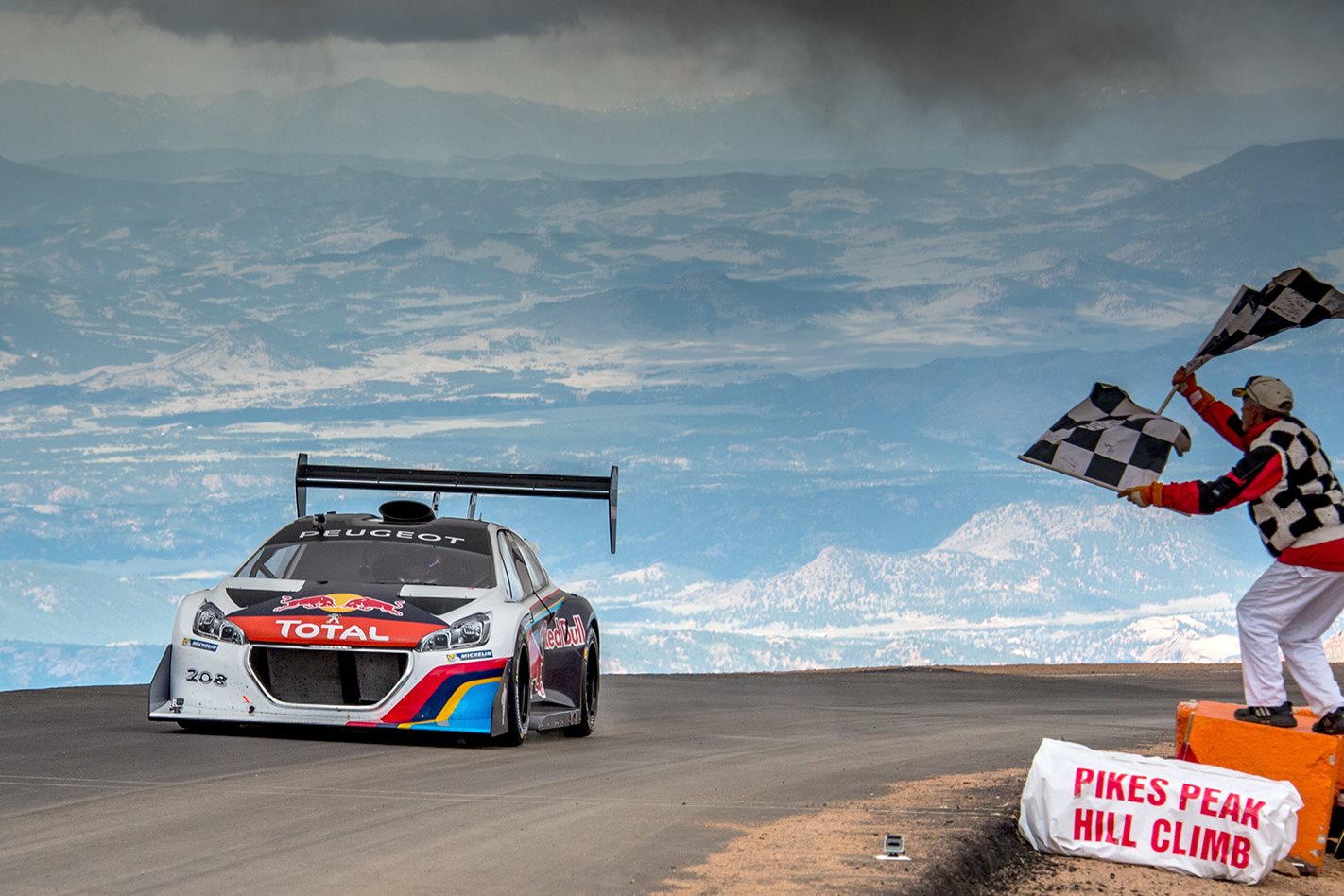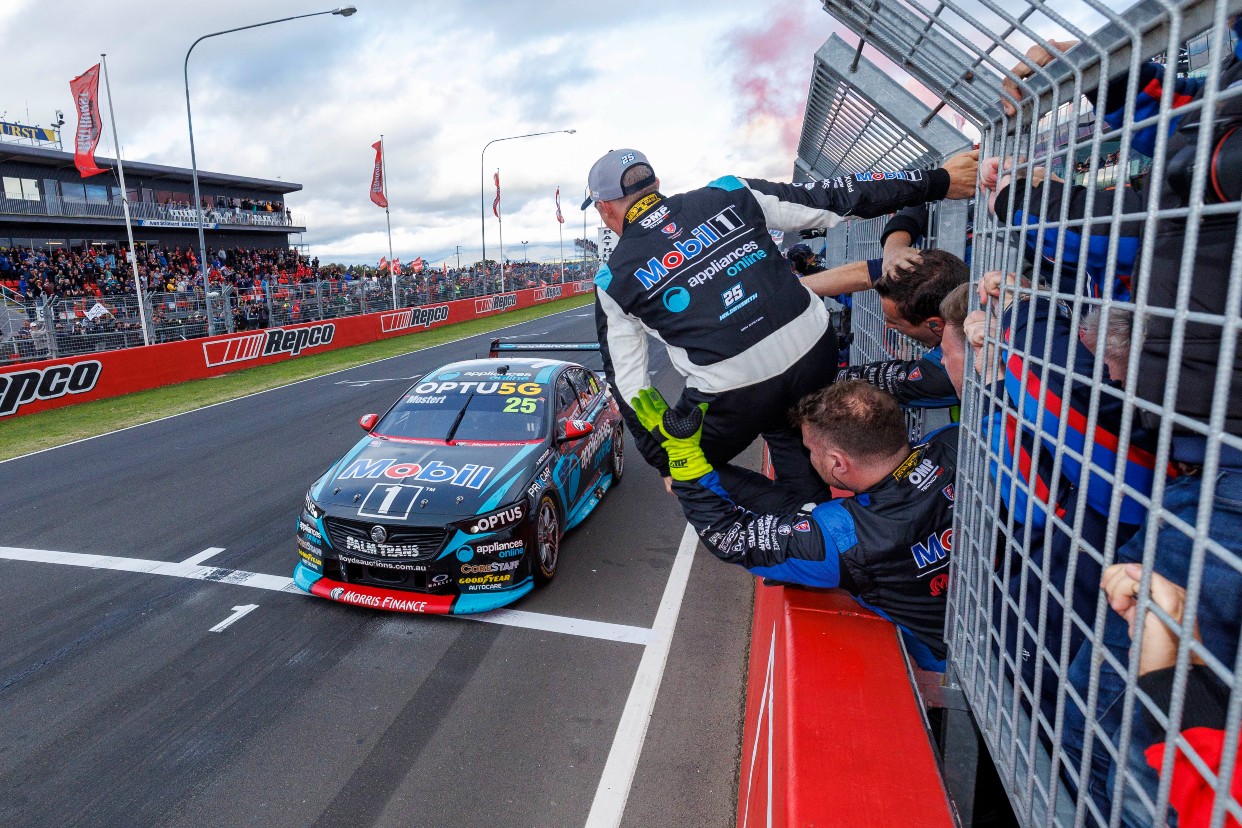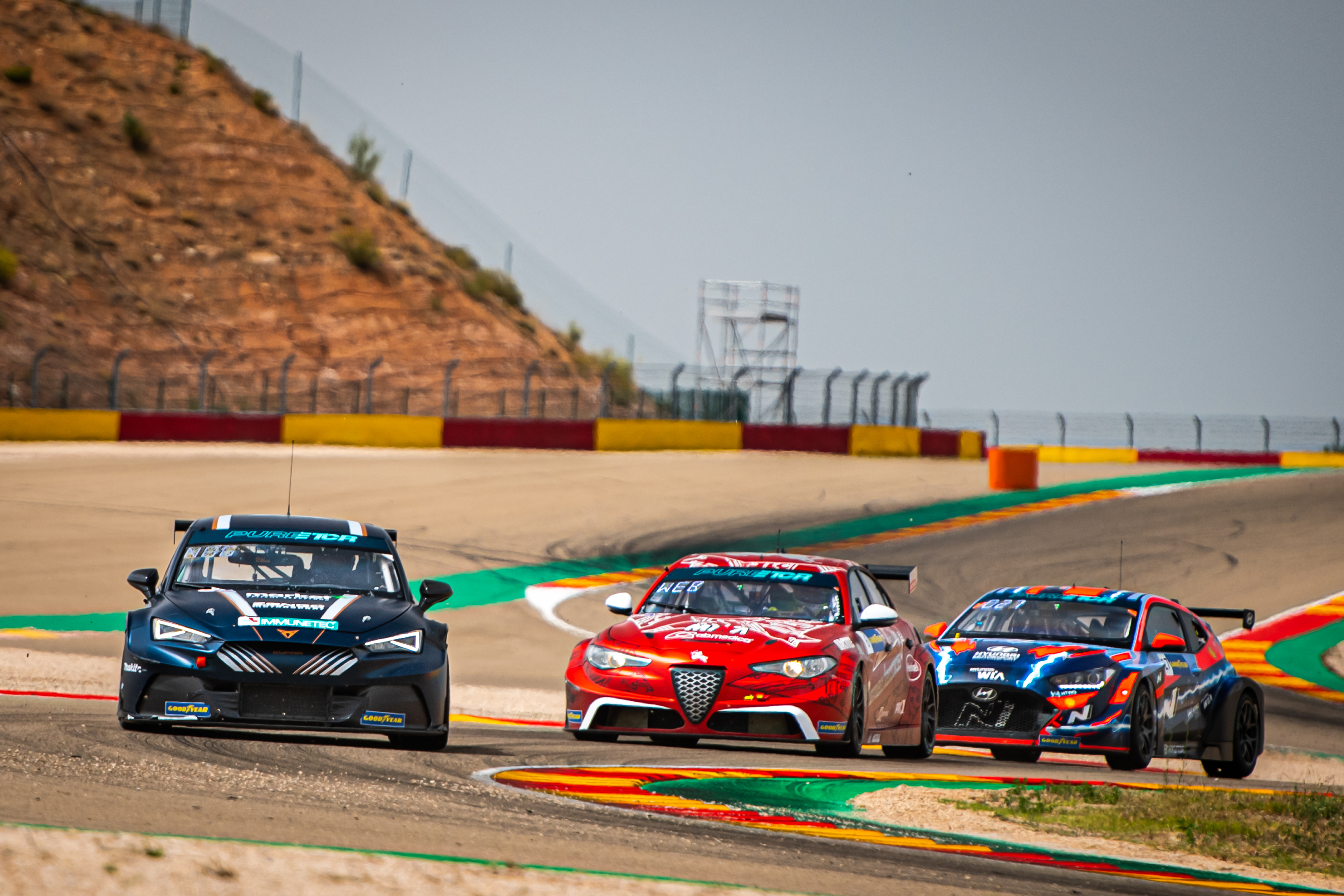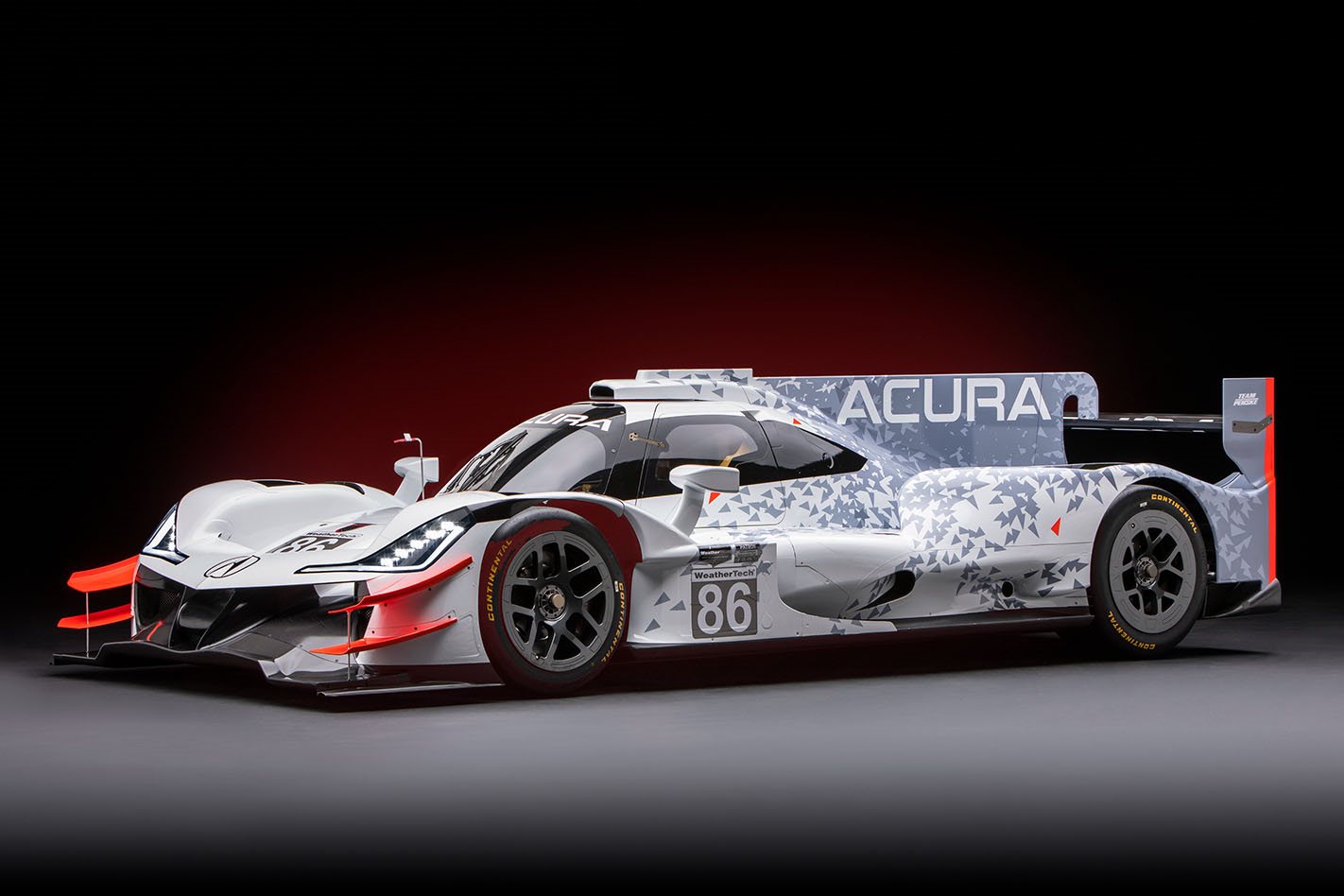THE most fearsome hillclimb in the world is taking place this weekend in Colorado at Pikes Peak.
Also known as the Race to the Clouds, the event has attracted mad hat racers and thrill seekers for decades, all of whom must contend with extreme elevation changes, 156 challenging corners, the close proximity of trees in the lower altitudes and vertigo-inducing sheer drops along the upper sections of the course.
While it requires a particular kind of driver to be successful at Pikes Peak, those drivers also require a particular breed of race car. These are some of the wildest from the race’s history:
1987 Volkswagen Golf Mk2
Volkswagen is fielding a 500kW all-electric prototype dubbed the I.D. R in this year’s unlimited class at Pikes Peak. But that imposing and stealthy machine isn’t the first unhinged beast the Germans have unleashed on the Colorado mountain. In 1987 a Mk2 Golf was built to take on Pikes Peak which featured not one, but two engines. In the 1980s teams were battling the power sapping effects of the high-altitude climb by pushing their engines to the very limit. VW though that it would take the idea a little further by doubling power via doubling the number of powertrains.
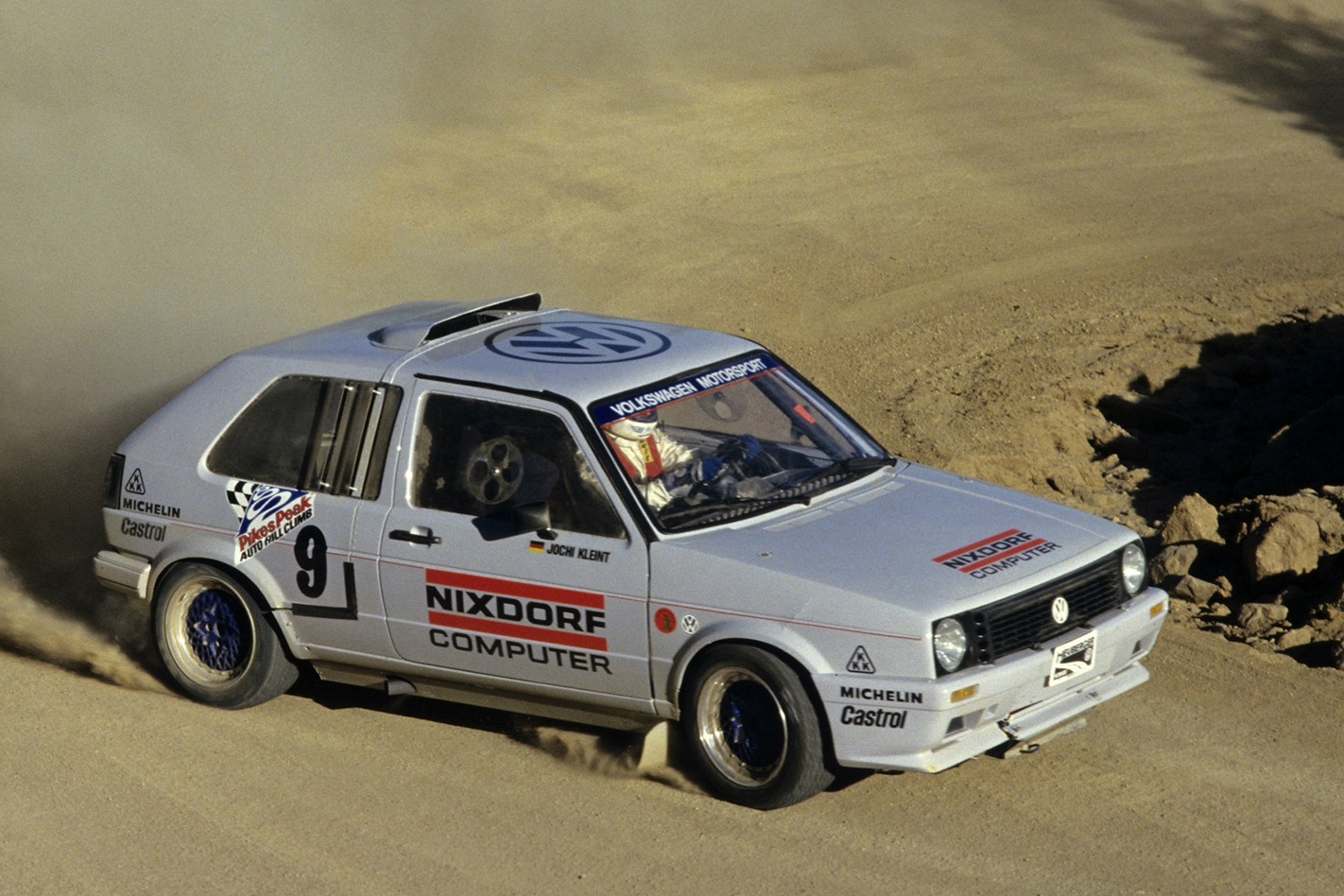
The Mk2 Golf was given a bespoke clamshell back half which housed a 1.8-litre four-cylinder turbo engine. Combined with an identical engine under the bonnet, the duo created a total system output of 447kW, with each motor driving one end exclusively.
Unlike most cars on this list, the ’87 Golf was bereft of massive aero, instead relying on the bravery of driver Jochi Kleint to keep all four wheels in the Colorado dirt. A system was developed within the car where Kleint could swap between front-, rear-, or all-wheel drive on the fly.
Kleint was on what looked to be a record breaking run, when just three corners from the finish line a suspension component failed forcing the car to retire agonisingly close to victory.
1988 Peugeot 405 T16
While rally legend Ari Vatanen drove the Peugeot 405 T16 to victory in the 1988 event, the duo are more often recognised as the stars of the award-winning Climb Dance movie – filmed at Pikes Peak.
The video is a must-watch for any petrolhead, with Vatanen perfectly in-sync with his high-boost beast.
Instead of regurgitating stats and figures on the 405 T16, I’ll simply let the Climb Dance video and an anecdote from Vatanen himself justify why this car couldn’t be omitted from this list.
“One thing I’ll remember forever was an occurrence during our preparations in Colorado,” Vatanen recalls on his website.

“We prepared the cars in a workshop in an industrial estate, where it was possible to do a quick roll-out on a closed-off street.
“Jean Todt sat beside me in the car, but of course there was no passenger seat. The car’s acceleration on tarmac (0-200km/h in under 10 secs) had made me think that this is how it must feel to be catapulted off the deck of an aircraft carrier!
“Jean tried to hang on to whatever solid objects he could find inside the car, but when I stamped on the pedal he just disappeared from my peripheral view… getting squashed against the firewall in the back!”
1991 Honda NSX by LoveFab
If one car alone personified the unhinged levels of aerodynamics needed to be successful at Pikes Peak nowadays, the LoveFab NSX would be it. Characterised by the snowplow-esque front wing, the 1991 Honda NSX is the work of Cody Loveland and his buddy Matthew Noble Marker.
The reason for the gargantuan front wing is purely pragmatic. Originally fitted with just the aft wing, the rear downforce was so significant that the NSX’s front tyres were struggling for traction. Instead of dialling things down at the back, Cory and Matthew simply decided to balance things out by equipping the front with an equally massive aerofoil.
It was at this point the duo faced a second problem. Downforce was now so significant, the suspension was being maxed out at speed, and the NSX was driving along on its bump stops.
An F1-style solution was found – a third damper that linked each pair of cantilevers in the car’s pushrod suspension – and even driving at “half pace” (following a nasty shunt in practice), Cody was able to finish second in the Unlimited class for the 2012 event.
1996 Suzuki Escudo Pikes Peak
Anyone who has spent time cutting laps with early Gran Turismo games will certainly be familiar with this red beast, piloted by the Monster himself. The most legendary driver at Pikes Peak Nobuhiro ‘Monster’ Tajima tamed the Suzuki for the 1996 event.
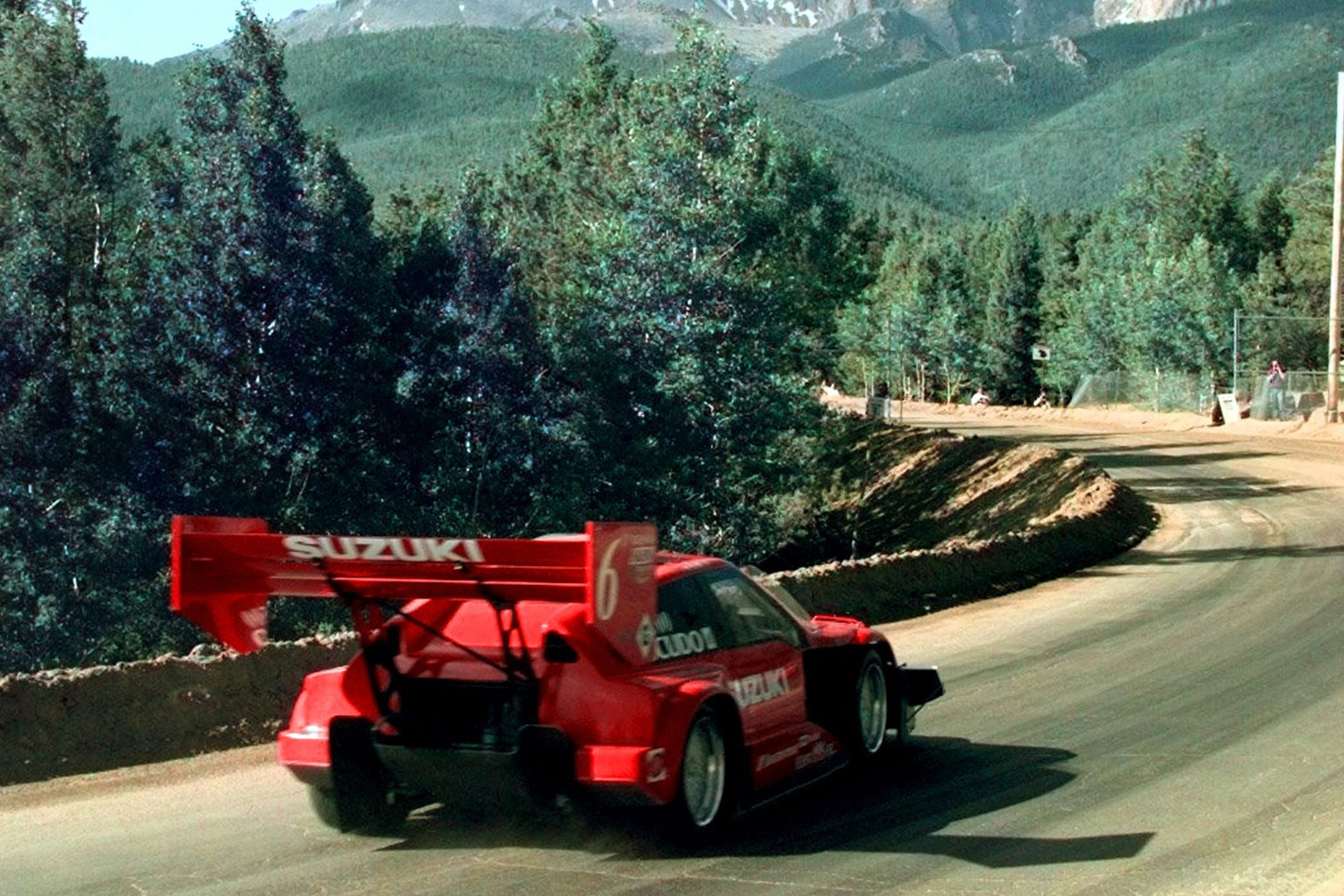
Tamed is the imperative word there, with the Escudo powered by a mid-mounted 2.0-litre twin-turbo V6, cranking out a staggering 734.5kW and weighing a scant 800kg – less than a current-gen Suzuki Swift. Truly insane.
1998 Toyota Tacoma
While not the fastest car on this list, Rod Millen’s Toyota Tacoma Pikes Peak car is certainly the most entertaining to watch. With unfathomably high boost levels, the Tacoma belches black smoke from its side-exit exhaust as Millen wrestles at the wheel.
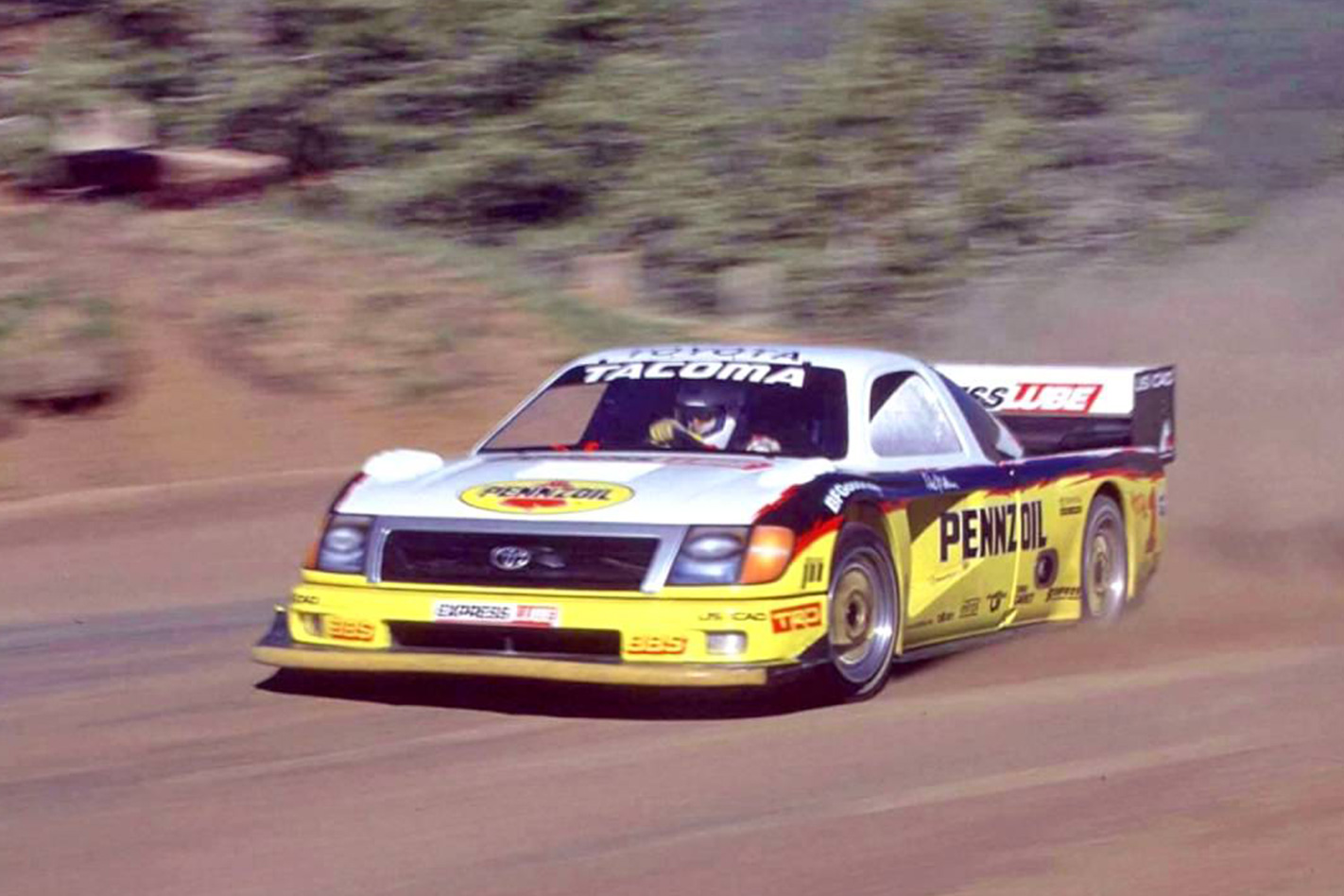
The mid-mounted 2.1-litre turbocharged four-cylinder was alleged to produce 745kW in full attack mode, and helped propel the 800g car to 60mph (97km/h) in 1.6 seconds. Yes, 1.6 seconds. Max speed was gear-limited to 212km/h.
Millen and the Tacoma won outright honours at Pikes Peak in 1998 and ’99, and the duo continues to entertain crowds at both the Goodwood Festival of Speed and Leadfoot festival to this day.
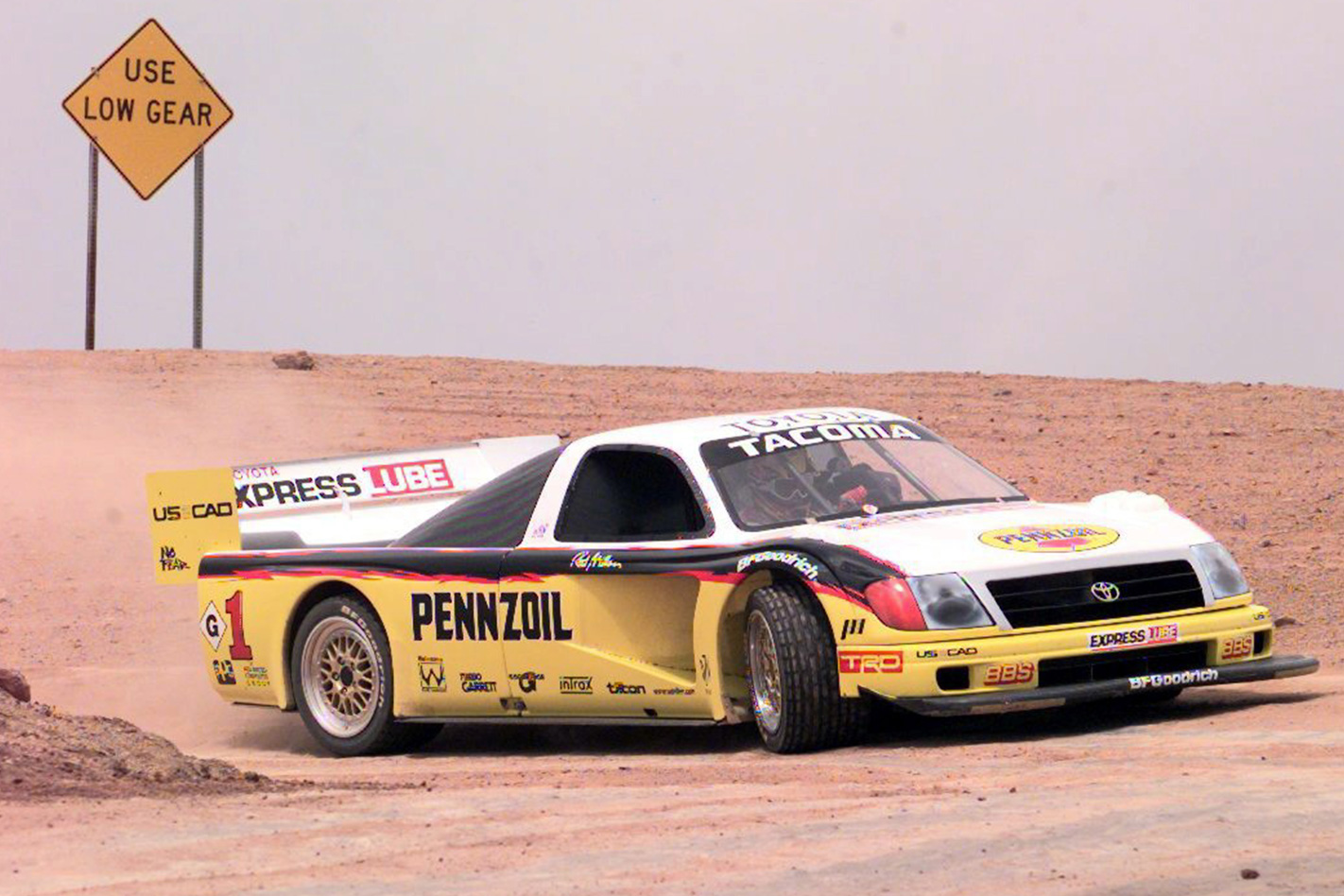
2013 Peugeot 208 T16 Pikes Peak
This list wouldn’t be complete without the fastest car/driver combo to ever attempt the Pikes Peak ascent – Sebastien Loeb and the Peugeot 2018 T16 Pikes Peak.

With aero lifted from the 908 LMP1 Le Mans race car, the 208 T16 was powered by a 3.2-litre twin-turbo V6 producing 652kW, with a total weight of 875kg. It wasn’t the most powerful car to compete at Pikes Peak, but it was shockingly efficient, with Loeb recording an average speed of 140km/h on his winning run.
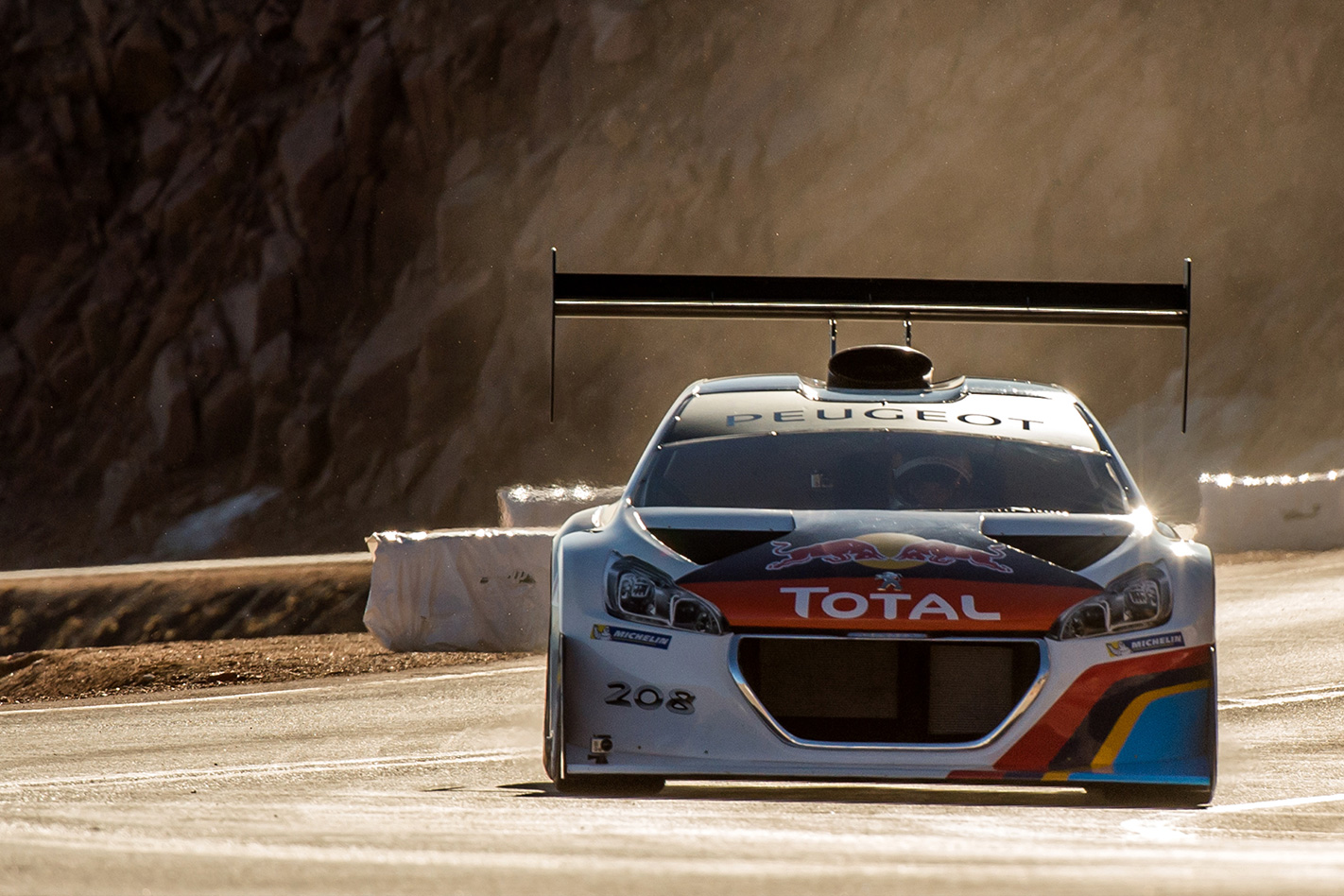
Loeb and the 208 T16 recorded a blistering 8:13.878 time to shatter the record and become the fastest combo to ascend Pikes Peak. At the time, the fastest record was a 9:46.164 set by Rhys Millen the year prior. The second quickest time in Pikes Peak history? A 8:51.445 set by Romain Dumas in 2016 – a full 37 seconds slower than Loeb. Long live the King of Pikes Peak


